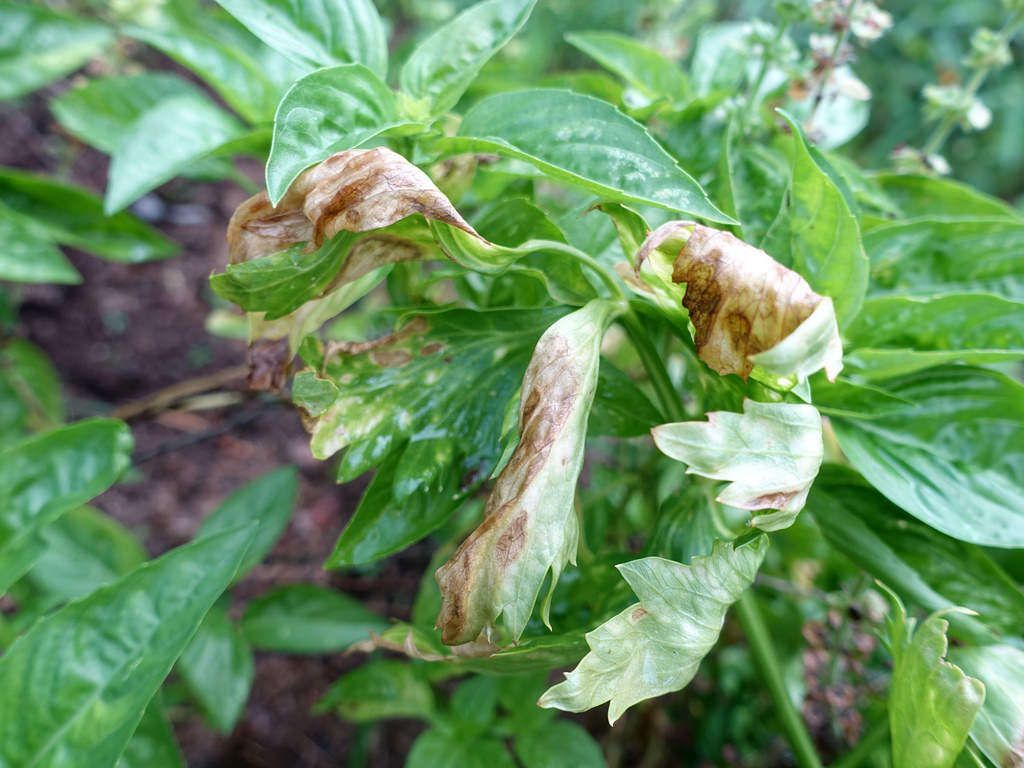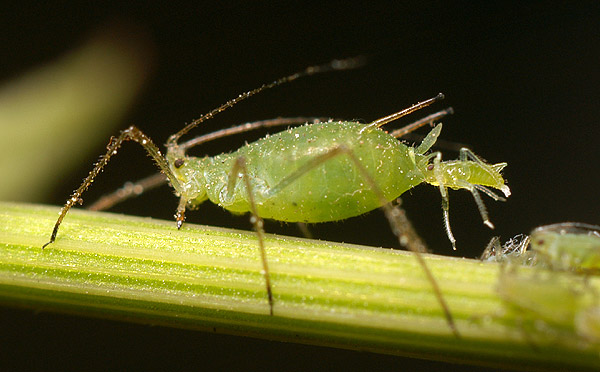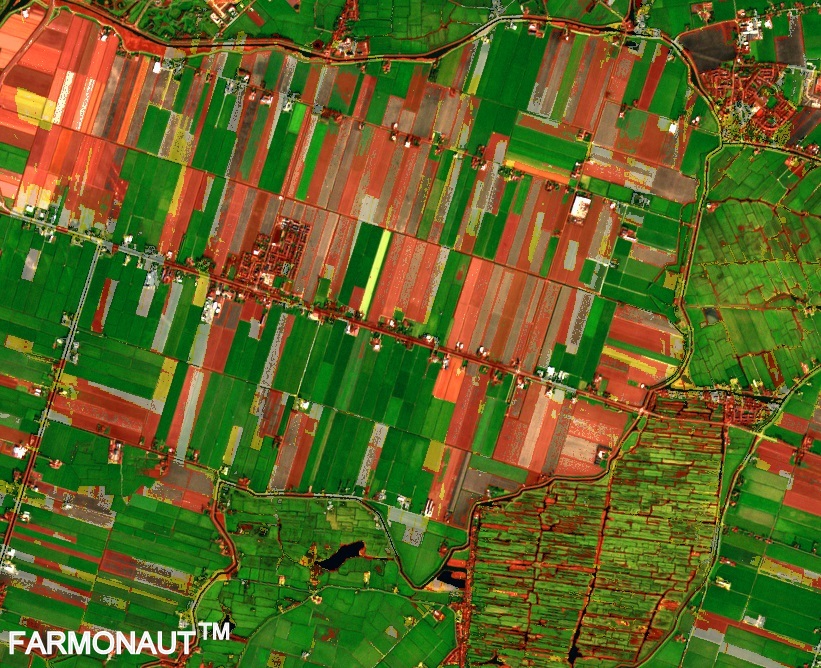Debunking 6 Milking Myths: Boost Your Dairy Farm’s Efficiency and Udder Health
“Proper teat stimulation can increase milk yield by up to 10% in dairy cows.”
Welcome to our comprehensive guide on debunking common milking myths in dairy farm management. As experts in agricultural technology and precision farming, we at Farmonaut understand the critical importance of efficient milking practices for dairy farmers. In this blog post, we’ll explore six prevalent misconceptions about milking and provide you with science-based insights to optimize your dairy operation.
Modern dairy farming is a complex and demanding industry, requiring a delicate balance of traditional knowledge and cutting-edge technology. By addressing these myths, we aim to help you improve your milking efficiency, enhance udder health, and ultimately boost your farm’s productivity.

Myth 1: Milk Let-Down Happens Automatically
One of the most persistent myths in dairy farming is the belief that milk let-down is an automatic process that occurs as soon as the milking machine is attached. This misconception can lead to inefficient milking practices and reduced milk yield.
Reality: Milk let-down is a complex physiological process that requires proper stimulation and a stress-free environment. The release of oxytocin, the hormone responsible for milk ejection, is triggered by tactile stimulation of the teats and udder. Without adequate stimulation, milk let-down may be incomplete or delayed, resulting in reduced milk yield and increased milking time.
To optimize milk let-down:
- Implement a consistent pre-milking routine
- Ensure proper teat cleaning and stimulation
- Minimize stress in the milking parlour
- Attach milking units within 60-90 seconds of stimulation
By understanding and respecting the milk let-down process, farmers can significantly improve their milking efficiency and overall herd productivity.
Myth 2: More Frequent Milking Always Increases Production
Many farmers believe that increasing milking frequency will automatically lead to higher milk production. While there’s some truth to this, it’s not a universal solution for all dairy operations.
Reality: The relationship between milking frequency and milk production is more nuanced than simply “more is better.” While increasing from twice to three times daily milking can boost production by 10-15% in many cases, the benefits may not outweigh the costs for all farms. Factors to consider include:
- Labor availability and costs
- Herd health and udder condition
- Feed management and nutrition
- Facility constraints
Before implementing more frequent milking, it’s crucial to assess your farm’s specific circumstances and consult with dairy management experts. At Farmonaut, we offer advanced satellite-based farm management solutions that can help you make data-driven decisions about your milking practices.
Myth 3: Heifers Should Always Be Milked Last
A common practice on many dairy farms is to milk heifers last, based on the belief that this reduces the spread of mastitis. However, this approach may not be the most effective strategy for udder health and milk quality.
Reality: While it’s true that heifers generally have lower somatic cell counts and are less likely to have chronic mastitis, milking them last can actually be counterproductive. Here’s why:
- Heifers are more susceptible to environmental pathogens
- Milking equipment may be less clean by the end of the milking session
- Stress levels can increase if heifers are kept waiting
Instead of adhering to a strict order based on age or lactation status, consider these strategies:
- Group cows based on udder health status
- Implement rigorous cleaning and sanitization protocols between groups
- Use individual towels for each cow to prevent cross-contamination
- Monitor udder health regularly using advanced tools like Farmonaut’s AI-powered advisory system
By focusing on hygiene and individual cow management, you can create a more effective milking order that prioritizes udder health across your entire herd.
Myth 4: Teat Dipping is Sufficient for Mastitis Prevention
Many farmers rely solely on post-milking teat dipping as their primary mastitis prevention strategy. While teat dipping is undoubtedly important, it’s not a complete solution for maintaining udder health.
Reality: Effective mastitis prevention requires a comprehensive approach that goes beyond teat dipping. While post-milking teat disinfection is crucial for reducing the spread of contagious pathogens, it doesn’t address all risk factors for mastitis. A holistic approach should include:
- Proper milking technique and equipment maintenance
- Clean and dry housing conditions
- Regular udder health monitoring
- Nutritional management to support immune function
- Prompt treatment of clinical cases
- Use of technology for early detection of subclinical mastitis
At Farmonaut, we understand the importance of data-driven decision-making in livestock management. Our satellite-based monitoring systems can help you track environmental conditions that may impact udder health, allowing for proactive management strategies.
Explore Farmonaut’s API for advanced agricultural insights
“Implementing effective hygiene protocols can reduce mastitis incidence by up to 50% in dairy herds.”
Myth 5: Overmilking is Not Harmful if Using Modern Equipment
With the advent of advanced milking machinery, some farmers believe that overmilking is no longer a concern. This misconception can lead to serious udder health issues and reduced milk quality.
Reality: Even with state-of-the-art milking equipment, overmilking remains a significant risk to udder health and milk production. Modern automatic take-off systems have greatly reduced the incidence of overmilking, but they are not foolproof. The consequences of overmilking include:
- Teat end damage and hyperkeratosis
- Increased risk of mastitis
- Reduced milk flow and incomplete milking in subsequent sessions
- Stress on the cow, potentially leading to behavioral issues
To prevent overmilking:
- Regularly calibrate automatic take-off systems
- Train milking staff to recognize signs of complete milking
- Monitor individual cow milking times and adjust as needed
- Use milk flow sensors to optimize milking duration
By implementing these practices and leveraging technology like Farmonaut’s AI-driven advisory system, you can ensure optimal milking duration for each cow, maximizing efficiency while protecting udder health.

Myth 6: All Teat Preparation Methods are Equally Effective
The final myth we’ll address is the notion that all teat preparation methods are equally effective in ensuring proper milk let-down and maintaining udder health. This oversimplification can lead to suboptimal milking practices and increased risk of mastitis.
Reality: The effectiveness of teat preparation methods can vary significantly, impacting both milk yield and udder health. Research has shown that certain practices are more effective than others in stimulating milk let-down and reducing bacterial contamination. Key factors to consider include:
- Duration of stimulation
- Type of cleaning solution used
- Method of application (manual vs. automated)
- Drying technique
Optimal teat preparation typically involves:
- Pre-dipping with an approved disinfectant
- A minimum of 10-20 seconds of manual stimulation
- Thorough drying with individual towels
- Attaching milking units within 60-90 seconds of initial stimulation
By implementing a scientifically-based teat preparation routine, you can significantly improve milk let-down, reduce milking time, and minimize the risk of mastitis in your herd.
Leveraging Technology for Improved Dairy Management
As we’ve explored these milking myths, it’s clear that modern dairy farm management requires a combination of traditional knowledge and cutting-edge technology. At Farmonaut, we’re committed to providing farmers with the tools they need to make informed decisions and optimize their operations.
Our satellite-based farm management solutions offer:
- Real-time monitoring of field conditions
- AI-powered advisory systems for crop and livestock management
- Weather forecasting to help plan milking and grazing schedules
- Data-driven insights for resource optimization
By integrating these technologies into your dairy management practices, you can:
- Improve feed quality and pasture management
- Optimize milking schedules based on environmental conditions
- Enhance overall herd health and productivity
- Make more informed decisions about farm operations
Explore Farmonaut’s API Developer Docs for integration options
Myth vs. Reality: A Comparative Overview
| Myth | Reality |
|---|---|
| Milk let-down happens automatically | Proper stimulation and a stress-free environment are crucial for optimal milk let-down |
| More frequent milking always increases production | Benefits of increased frequency depend on various factors and may not be cost-effective for all farms |
| Heifers should always be milked last | Milking order should be based on udder health status rather than age or lactation number |
| Teat dipping is sufficient for mastitis prevention | A comprehensive approach including hygiene, nutrition, and monitoring is necessary for effective mastitis prevention |
| Overmilking is not harmful with modern equipment | Overmilking can still cause teat damage and increase mastitis risk, even with advanced machinery |
| All teat preparation methods are equally effective | Specific, scientifically-based teat preparation techniques are more effective for stimulation and hygiene |
Conclusion: Embracing Science-Based Milking Practices
As we’ve explored these six common milking myths, it’s clear that modern dairy farm management requires a blend of traditional knowledge and scientific understanding. By debunking these misconceptions and implementing evidence-based practices, dairy farmers can significantly improve their milking efficiency, enhance udder health, and boost overall productivity.
Key takeaways for optimizing your dairy operation include:
- Prioritize proper stimulation for effective milk let-down
- Tailor milking frequency to your farm’s specific needs and capabilities
- Implement a comprehensive mastitis prevention strategy
- Use technology to monitor and improve udder health
- Optimize teat preparation techniques for maximum efficiency and hygiene
- Regularly train staff on best milking practices
By embracing these principles and leveraging advanced technologies like those offered by Farmonaut, you can take your dairy farm to new heights of efficiency and profitability. Our satellite-based monitoring systems, AI-powered advisory tools, and data-driven insights can help you make informed decisions about every aspect of your operation, from pasture management to herd health.
FAQs
Q: How can I improve milk let-down in my dairy cows?
A: To improve milk let-down, ensure a consistent pre-milking routine with proper udder stimulation, maintain a calm environment in the milking parlour, and attach milking units within 60-90 seconds of initial stimulation.
Q: Is it worth investing in more frequent milking for my herd?
A: The benefits of more frequent milking depend on various factors such as labor costs, herd health, and facility constraints. Conduct a thorough cost-benefit analysis and consider using Farmonaut’s advisory tools to make an informed decision.
Q: How can I reduce the risk of mastitis in my dairy herd?
A: Implement a comprehensive approach including proper milking techniques, maintain clean housing conditions, regular udder health monitoring, and use technology like Farmonaut’s satellite-based systems to track environmental factors that may impact udder health.
Q: What’s the best way to prepare teats for milking?
A: An effective teat preparation routine includes pre-dipping with an approved disinfectant, 10-20 seconds of manual stimulation, thorough drying with individual towels, and attaching milking units within 60-90 seconds of initial stimulation.
Q: How can Farmonaut’s technology help improve my dairy farm management?
A: Farmonaut offers satellite-based monitoring systems, AI-powered advisory tools, and data-driven insights that can help optimize pasture management, predict weather patterns, and provide valuable information for making informed decisions about herd health and farm operations.
By staying informed about the latest advancements in dairy science and leveraging cutting-edge technologies, you can ensure that your dairy farm remains competitive and sustainable in the ever-evolving agricultural landscape. Remember, efficient milking practices not only boost productivity but also contribute to better animal welfare and long-term farm success.
At Farmonaut, we’re committed to supporting dairy farmers with innovative solutions that drive efficiency and sustainability. Explore our range of services and see how we can help you transform your dairy operation today.
Farmonaut Subscriptions
By implementing these science-based milking practices and leveraging advanced technologies, you can significantly enhance your dairy farm’s efficiency, improve udder health, and boost overall productivity. Remember, successful dairy farming is a continuous process of learning and adaptation. Stay informed, embrace innovation, and watch your dairy operation thrive.
















